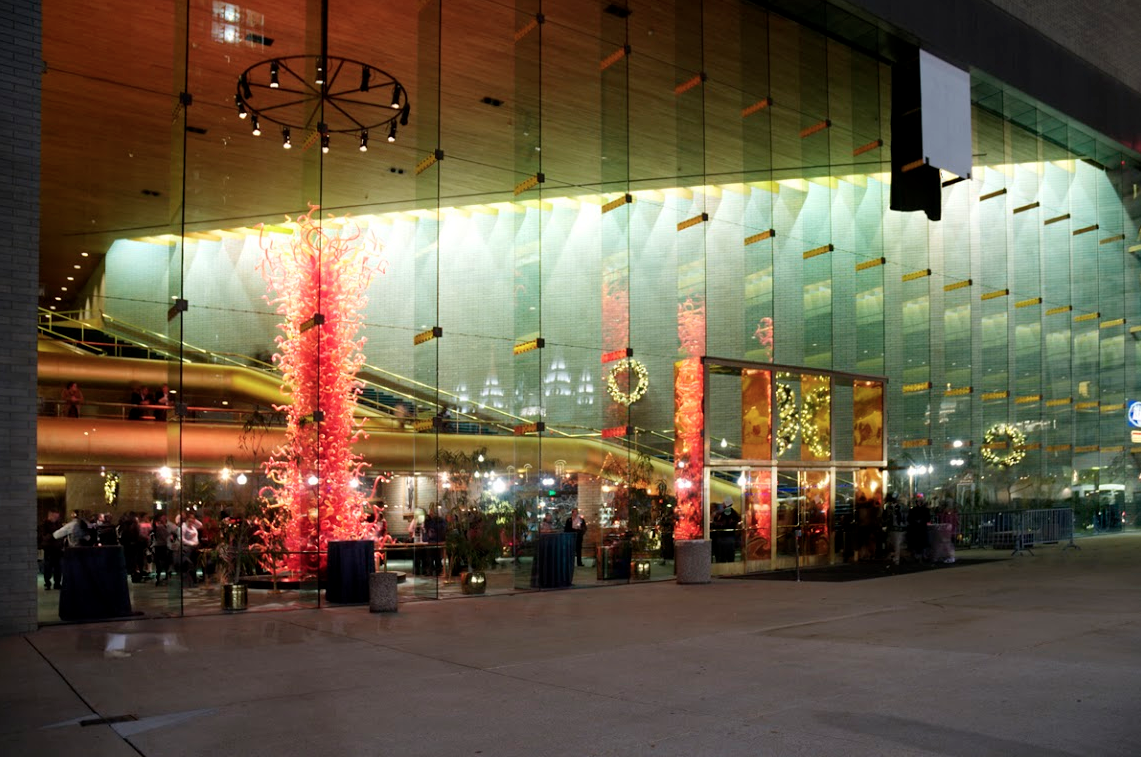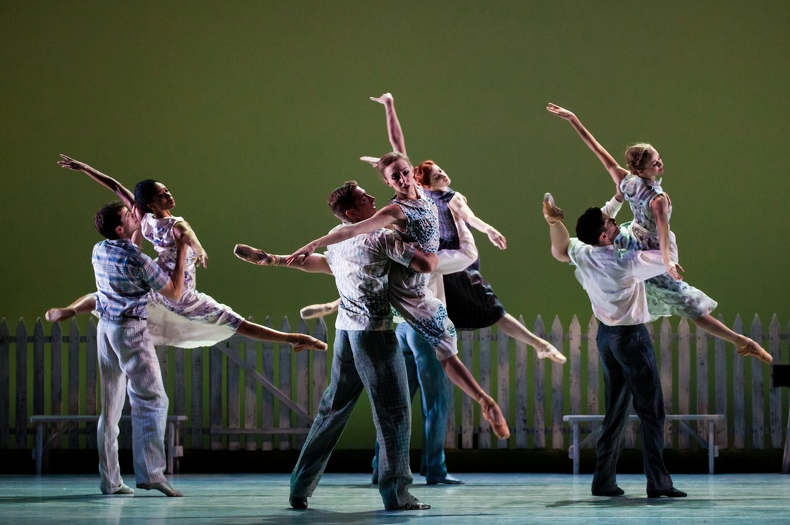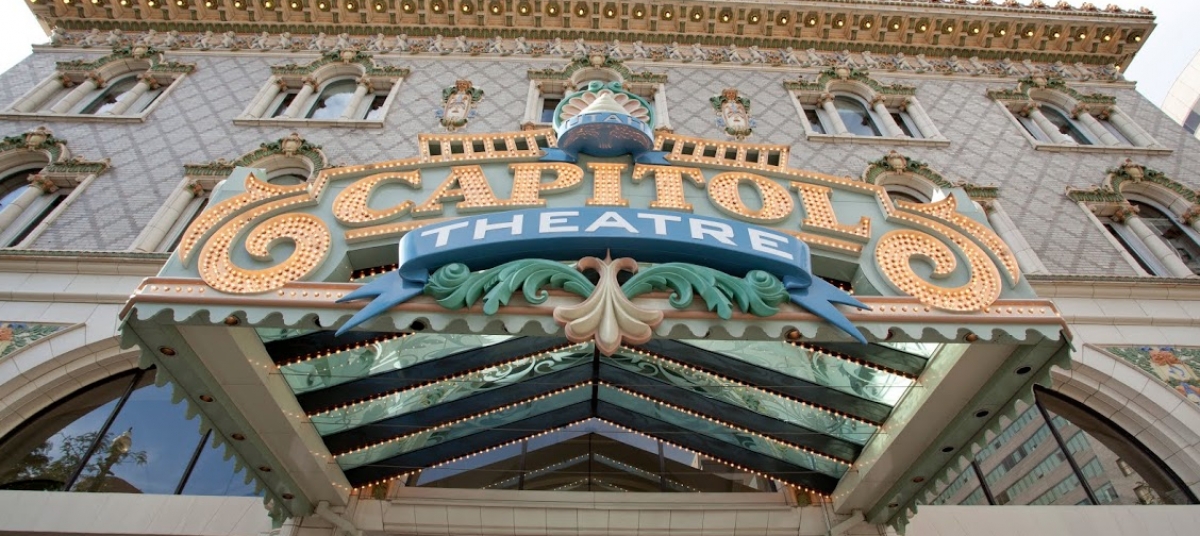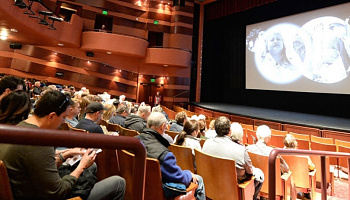Though Friedrich Nietzsche’s timeless quote, “That which does not destroy me makes me stronger,” has been used countless times to describe struggles both large and small by personalities ranging from G. Gordon Liddy to Kanye West, there is likely no more apropos words to personify Salt Lake City’s beloved pillar performing arts organizations: Ballet West and Utah Symphony | Utah Opera.
While dwindling public and private support during the Great Recession forced opera houses, ballets and symphonies across the country—many larger than their Utah counterparts—to close their doors permanently, Ballet West and Utah Symphony | Utah Opera endured. Utah’s resilient economy and faithful local audiences helped the Legacy Three survive the country’s worst financial times since the Depression. But ask representatives from each how their respective organization managed to come out on the other side of those challenging times stronger and more popular than ever, and you’ll get the same answer: an unwavering commitment to artistry.

Utah Opera
The pursuit of excellence by Salt Lake City’s youngest cultural anchor—the Utah Opera (founded in 1978 by native Utahn Glade Peterson)—is based in the presentation of carefully curated seasons juxtaposing classic operas with more contemporary works. “I’m known for taking artistic risks, but there’s a fine balance when presenting new pieces,” says Utah Opera Artistic Director Christopher McBeth. “On the micro level, we include something recognizable within every season to help develop new audiences. On the macro level, world premieres or newer works are presented more strategically over the course of five or more seasons.”
Reflecting what McBeth points out as a current industry trend toward grand-scale productions, the Utah Opera’s 2015-16 season line up—Tosca, The Merry Widow, Aida and The Marriage of Figaro—falls squarely in the greatest hits category. “The complete season is ideal for both new and veteran opera goers, but if I had to recommend two I’d have to say Tosca, a famous, very realistic opera, written in a very cinematic way, set to music that’s better than any film score. It’s an ideal choice for those new to opera,” he says. “And Aida, a very grand, over-the-top opera with big colorful sets with lots of people on stage and a storyline that includes plenty of shock and awe, will dazzle even the most experienced opera aficionado.”
Other ways the Utah Opera is maintaining its artistic relevancy is by seeking out the next generation of singing actors. “To keep the art form alive, we need to showcase new talent,” McBeth says. To this end McBeth spends the off-season taking in operatic performances and festivals across the country and abroad looking for fresh talent, often casting singers right out of conservatory. But that doesn’t mean he eschews the established veterans. “We’ve found that the casts audiences enjoy the most are those made up of both established and emerging actors,” he says.
By combining old and new, both in terms of the operas selected for production and the actors cast to bring those stories alive, the Utah Opera treats audiences to a rare sense of discovery. “Our audiences know that every time they come to the theater they will not only get to see a high quality production, but they will also—even if they are seeing an opera for hundredth time—get to experience something new,” he says.
Ballet West
Similar to its operatic counterpart, Utah’s second-oldest Legacy Three performing arts organization, Ballet West, was built on an artistic foundation spanning both classic and new works. Hinged on founder Willam Christensen’s interpretation of American classical ballet, the company became a beloved fixture from its founding in 1963, particularly for Christensen’s renowned The Nutcracker, which remains a pillar of the company’s repertoire to this day. But over the past several years, a series of events—some intentional others serendipitous—have heralded in an unprecedented era at the Intermountain West’s preeminent dance company, high times that even Christensen probably never dared to dream of.
Foremost in Ballet West’s recent emergence is Artistic Director Adam Sklute, a 23-year veteran of the Joffrey Ballet, appointed to his current post in 2007. Under Sklute’s direction Ballet West has presented more than 55 world premieres, revived lost elements of Christensen’s beloved The Nutcracker, and introduced the wildly popular annual Innovations program. The company has also pursued a very active touring schedule, including two acclaimed runs of The Nutcracker at Washington D.C.’s Kennedy Center for the Performing Arts in 2012 and 2014 and a March 2015 residency at New York City’s Joyce Theater where the company performed the world premiere of Helen Pickett’s Games.
Likely as a result of Sklute’s diligence in elevating Ballet West’s national profile, in 2012 the company was featured on The CW’s reality television series, Breaking Pointe. The show, running for two seasons, made celebrities of its principal dancers and brought unparalleled brand awareness to the company, particularly in the social media realm.
And then in December 2014, Ballet West opened the long-awaited, 55,000-square-foot, $22 million Jessie Eccles Quinney Ballet Centre, an achievement Executive Director Scott Altman called “a watershed moment” for the 52-year-old ballet company. “Ballet West’s artistry has always been world class. Now that the Centre is complete we can build on all the remarkable work that came before with the talent assembled in our development in marketing teams and really take advantage of this new invigorated moment in time for Ballet West,” Altman says.
The proof is in the numbers. Tickets sales for Ballet West’s 2014-15 season were up 16 percent overall and revenue at the Ballet West Academy, one of the most renowned dance education institutions in the country with eight studios at three locations (downtown at the new Ballet Centre, at Trolley Square and at Thanksgiving Point), was up 70 percent. Perhaps the year’s most significant fiscal achievement, however, was elimination of the company’s 33-year operational debt.
Ballet West’s plans to maintain this extraordinary momentum in the 2015-16 season with an array of classic favorites, modern masterpieces and contemporary works. Iconic Classics opens the season in November with a diverse triple bill including Fancy Free, On An Overgrown Path and Symphony in C. In December, the company presents the 60th anniversary of The Nutcracker. Romeo & Juliet makes its Utah debut in February. Opening in April is The Nijinsky Revolution, three modern retellings of the legendary-dancer Vaslav Nijinsky’s groundbreaking choreography. The season rounds out in April with the return of Innovations, a showcase of cutting-edge and up and coming choreographers. “Our 2015-16 season shows off the breadth and scope of our repertoire and the astonishing versatility of our dancers,” Sklute says. “Our dancers are great athletes, artists and story-tellers, and our productions are of the highest caliber. Few companies in the world can master a repertoire that is so rich and varied. It is a groundbreaking season with something for everyone and I am so excited to present it to our audiences.”

Utah Symphony
Presenting something for everyone is exactly how Utah’s patriarch arts organization, the Utah Symphony, built a worldwide reputation for uncompromising artistry. Maurice Abravanel, symphony music director from 1947 to 1979, nurtured the fledgling orchestra (formed in 1940) into a leading American ensemble, leading the symphony on four international tours, releasing more than 100 recordings and developing an extensive music education program. Today, the Utah Symphony presents more than 70 performances each season at Abravanel Hall and participates in the Utah Opera's four annual productions at the Capitol Theatre (The symphony and opera merged operations in 2002.) in addition to numerous community concerts throughout Utah and the annual outdoor summer series in Park City, the Deer Valley Music Festival.
Most would agree, however, that in the last several years the Utah Symphony has gone through a renaissance infused with a new dynamism. The catalyst for this new found energy can be largely attributed to Thierry Fischer, the symphony’s rock star-persona music director. “Thierry has provided incredible leadership and has very intentionally built up the skill level within the orchestra,” says Patricia Richards, Utah Symphony interim president and CEO. “Many people have commented that the symphony sound different than it did years ago.”
In the six years he’s helmed the Utah Symphony, Fischer has added a cadre of young, rising-star musicians to the orchestra; nationally recognized talent including Associate Concertmaster and violinist Kathryn Eberle and Associate Conductor and pianist Rei Hotoda—the first woman to hold this post.
The 2015-16 season represents the Utah Symphony’s 75th and the schedule created by Fischer and his staff is truly worthy of this diamond milestone. Highlights include a two-week Beethoven Festival and cycle of the composer’s complete symphonies; performances of Mahler’s Symphonies 5 through 9 to conclude the Orchestra’s two-year complete symphony cycle of the composer in honor of Abravanel; orchestral world premieres to be recorded for future release; collaborations with Utah Opera, Ballet West, Utah Shakespeare Festival, Mormon Tabernacle Choir and The Madeleine Choir School; a 75th anniversary gala concert featuring pianist virtuoso Lang Lang; and the Utah Symphony’s triumphant return to New York City’s Carnegie Hall. “The 2015-16 season represents many attractive and inspiring programming challenges, and a culmination of our vision to collaborate and connect to people through live music,” Fischer says.
Salt Lake City is a thriving, cosmopolitan destination due in no small part to the world class cultural moorings providing by Ballet West and Utah Symphony | Utah Opera. Shaped by Utah’s pioneering past, the Legacy Three shepherded Salt Lake City into the exciting present with aplomb and have proven their resiliency and artistic foresight to chart Utah’s course for what’s sure to be an artistically vibrant and rich future.




